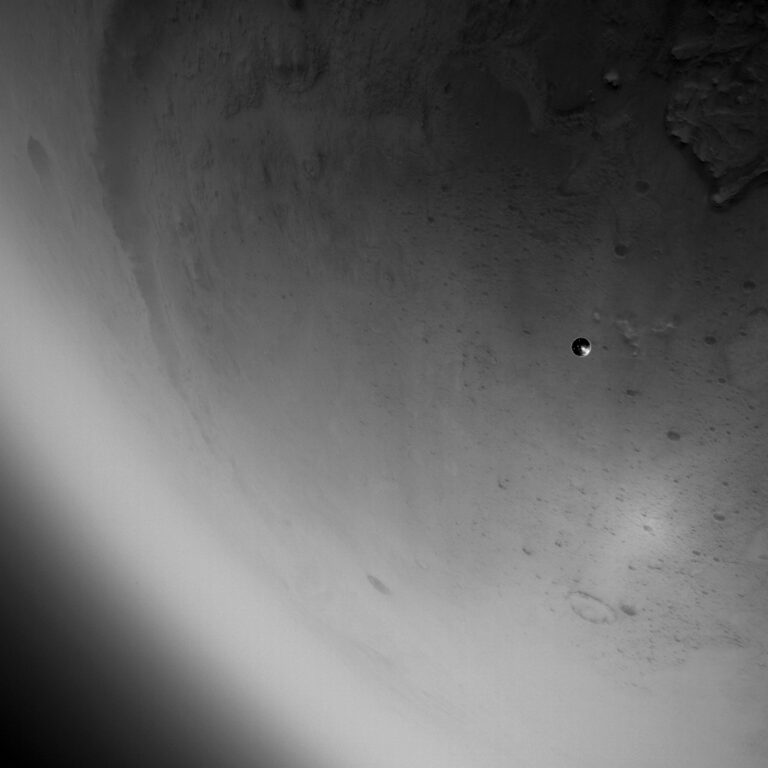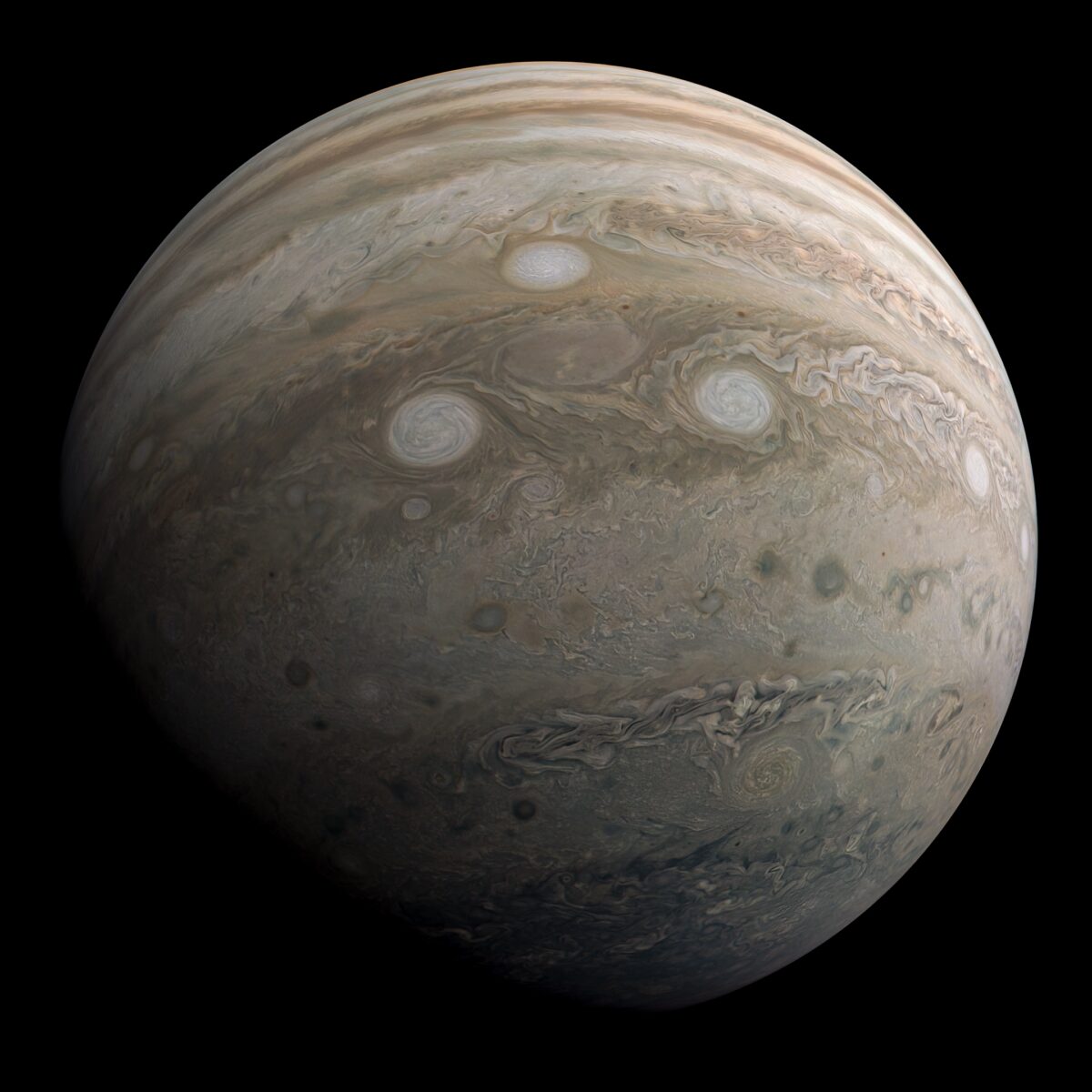The Downlink • Mar 19, 2021
A cosmic bowling ball spinning through space
You love space, now take action
This weekly newsletter is your toolkit to learn more about space, share information with your friends and family, and take direct action to support exploration. Anyone can subscribe at planetary.org/connect to receive it as a weekly email.
Mission Briefings


NASA’s Perseverance rover is moving right along on Mars. The agency released new audio clips that include the sound of the rover’s SuperCam science laser zapping nearby rocks. Perseverance also dropped its belly pan, which exposes the system that will be used to collect samples for future return to Earth. NASA also released the raw black-and-white images Perseverance’s computer used to steer the spacecraft to a safe landing, including the one pictured above. Image credit: NASA/JPL-Caltech/MSSS.

But why should Perseverance have all the fun? NASA’s Curiosity rover, which is continuing to explore Gale Crater, has reached a hilly region the rover has spied from afar since landing in 2012. The new images from the region are stunning; click here to see what it would look like to stroll around a rock formation named Mont Mercou.

Not to be outdone, NASA’s InSight lander has been playing in the Martian soil. New images show the spacecraft’s robotic scoop burying the tether leading to the spacecraft’s seismometer. Burying the tether will insulate it from Mars’ drastic temperature shifts and help scientists get clearer readings of Marsquakes that will help reveal the planet’s interior.

The iconic Hubble Space Telescope is back in operation. The observatory was briefly out of order while engineers troubleshot an instrument that failed to boot back up after a software glitch. Learn more about Hubble here.

The core state of NASA's Space Launch System test-fired its engines for 8 minutes. The test in Mississippi mirrored the amount of time the big rocket’s engines will fire during a typical flight to orbit. If data from the test show no problems, the stage will ship to Florida for the Artemis I test flight to the Moon, which is still scheduled for late 2021.
From The Planetary Society

With Mars dominating the news these days, don’t forget about Venus! The newest issue of our quarterly member magazine The Planetary Report focuses on the intriguing planet next door. We explore the tantalizing possibility of chemical signatures related to life high in Venus’ clouds, look back at the history of Venus exploration, and share insights into what might come. As always, we also celebrate the impact that our members have made and invite our readers to get more involved as space advocates. Pictured: Venus as seen by NASA's Mariner 10 spacecraft. Image credit: NASA/JPL/Mattias Malmer.
What's Up

In the evening sky look for Mars and the reddish star Aldebaran high up in the sky near the constellation Orion. Before dawn, Jupiter and Saturn get higher in the Eastern sky every day. Learn more at planetary.org/night-sky.
Be A Space Advocate!

Our space policy and advocacy program educates and encourages policymakers to invest in space science and exploration. Right now, this program needs your support, and every donation will go twice as far thanks to a generous Planetary Society member who will match your gift up to a total of $50,000. Help advance space science and exploration today! U.S. residents can also sign a petition telling the new U.S. Administration and Congress to invest in NASA. With your help, we’ll keep advocating for more missions that matter.
Wow of the Week

This stunning artwork was created by Barbara Sheehan, a member of The Planetary Society and of the International Association of Astronomical Artists. It shows her interpretation of what the surface of an exoplanet in the TRAPPIST-1 system might look like. "I picture a cold twilight with a lot of glow," says Sheehan. The piece includes shards of glass leftover from her father’s stained glass practice and small pieces of pottery and glass she collected from the Potomac River in Alexandria, Virginia. You can find more of Sheehan’s work at barbarasheehan.com/works.
Do you have a suggestion for the Wow of the Week? We’re looking for space-related art, music, gadgets, quotes, fashion, burning questions, brief sci-fi passages, or anything else that will make our readers go “Wow!” Send us your idea by replying to any Downlink email or writing to [email protected], and please let us know if you’re a Planetary Society member.


 Explore Worlds
Explore Worlds Find Life
Find Life Defend Earth
Defend Earth


